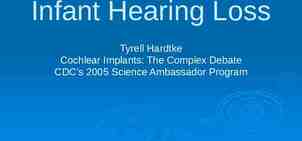APPORTIONMENT OF CORPORATE INCOME BETWEEN THE STATES FOR ITEMS OF
41 Slides741.70 KB
APPORTIONMENT OF CORPORATE INCOME BETWEEN THE STATES FOR ITEMS OF INCOME OTHER THAN TANGIBLE PERSONAL PROPERTY
DISCLAIMER Ernst & Young refers to the global organization of member firms of Ernst & Young global limited, each of which is a separate legal entity. Ernst & Young LLP is a client–serving member firm of Ernst & Young global limited located in the US. NMTRD refers to the New Mexico Department of Taxation and Revenue. AZDOR refers to the Arizona Department of Revenue. Ernst & Young and its member firms, NMTRD and AZDOR expressly disclaim any liability in connection with use of this presentation or its contents by any third party. These slides are for educational purposes only and are not intended, and should not be relied upon, as accounting or legal advice. The views expressed by panelists in this webcast are not necessarily those of Ernst & Young or its member firms, NMTRD or AZDOR.
YOUR PRESENTERS Helen Armstrong Brad Odell Carl Joseph Steve Shiffrin If you need CPE/CLE don’t forget to sign the sheet
Uniform Division of Income for State Purposes Act (UDITPA) General Description
BASIS FOR APPORTIONMENT AND ALLOCATION OF INCOME Complete Auto Transit, Inc. v. Brady, 430 U.S. 274 (1977) – Provided test for determining if state tax violates commerce clause there is substantial nexus between the state and the activity being taxed; The tax is fairly apportioned; The tax does not discriminate against interstate commerce; and The tax is fairly related to the services provided by the state.
DEFINING ALLOCATION AND APPORTIONMENT Allocation refers to the method of dividing a tax base by tracing particular property, receipts, or income to their source or other connection with a state, and attributing the item in its entirety to that state. Hellerstein, State Taxation ¶ 8.04 Apportionment uses selected factors for attributing the tax base to a particular state or states based on the taxpayer using its property, carrying on its activities, and earning income in that state or states. Hellerstein, State Taxation ¶ 8.05
UNIFORM DIVISION OF INCOME FOR TAX PURPOSES ACT UDITPA § 2 – taxpayer having income from business activity which is taxable both within and without the state shall allocate and apportion its net income UDITPA § 3 – test to determine if taxpayer is taxable in another state taxpayer actually subject to a tax in another state state has jurisdiction to subject the taxpayer to a tax regardless if it does or does not
BUSINESS V. NON-BUSINESS INCOME UNDER UDITPA § 1(A) & (E) Business Income – Income arising from transactions and activity in the regular course of the taxpayer’s trade or business and income from the disposition or liquidation of a business or segment of a business. Business income includes income from tangible and intangible property if the acquisition, management, or disposition of the property constitutes integral parts of the taxpayer’s regular trade or business operations Non-business income – everything else
ALLOCATION OF NON-BUSINESS INCOME – UDITPA §§ 4-8 Allocable Income is non-business income Statutory and Regulatory Rules governing allocable income: Net rents and royalties from real property Net rents and royalties from tangible personal property Capital gains and losses Interest and Dividends Patents and copyright royalties
APPORTIONMENT OF BUSINESS INCOME – UDITPA §§ 9-17 All business income is apportioned to the states typically using a three factor formula Property, payroll, and sales Income is multiplied by a fraction consisting of the property factor plus the payroll factor plus the sales factor divided by 3 Many states are modifying their apportionment factors New Mexico – single sales factors for manufacturers (phased in over time) and business headquarters operations Arizona – single sales factor phased in by tax year 2017 Other states
SALES FACTOR – UDITPA §§ 15-17 Calculation of sales factor Numerator is total sales of the taxpayer in the state Denominator is total sales of the taxpayer everywhere during the tax period Determination of sales within the state depends on whether the sale relates to tangible personal property or everything else
DETERMINATION OF SALES, OTHER THAN SALES OF TANGIBLE PERSONAL PROPERTY – UDITPA § 17 Sales, other than sales of tangible personal property, are in this state if: The income producing activity is performed in this state; or The income producing activity is performed both in and outside this state and a greater portion of the incomeproducing activity is performed in this state than in any other state, based on costs of performance.
APPORTIONING THE SALE OF SERVICES Defining first what is the income producing activity. The transactions and activity engaged in by the taxpayer in the regular course of its trade or business for the ultimate purpose of producing that item of income. MTC Reg. IV. 17(2); NMAC 3.5.18.8(a); A.A.C. R15-2D-806(1).
APPORTIONING THE SALE OF SERVICES Cost of performance Definition: direct costs determined in a manner consistent with generally accepted accounting principles and in accordance with conditions or practices in the trade or business of the taxpayer. MTC Reg. IV. 17(3); NMAC 3.5.18.8; A.A.C R15-2D-806(1). Determination Costs between taxing state and the costs in any other individual state (not aggregated) – Clipper Express Co. v. Comm’r of Revenue, No. 120514, 1986 WL 22656, at *4 (Mass. App. Tax Bd. Nov. 14, 1986)
APPORTIONING THE SALE OF SERVICES Market-State Approach Attributing the receipts from services according to the taxpayer’s market Customer location v. benefit of the service Revised Section 17 of UDITPA In 2014, the MTC adopted a revised section 17 of UDITPA to provide that receipts, other than receipts for the sale of tangible personal property, be sourced based on market
MTC ARTICLE IV, § 17 Sales, other than sales of tangible personal property, are in this State if: (a) the income-producing activity is performed in this State; or (b) the income-producing activity is performed both in and outside this State and a greater proportion of the incomeproducing activity is performed in this State than in any other State, based on costs of performance. Arizona’s version: A.R.S. § 43-1147
MTC REG. IV.17(2) Sales Factor: Sales Other Than Sales of Tangible Personal Property in This State (2)Income producing activity: defined. The term "income producing activity“ applies to each separate item of income and means the transactions and activity engaged in by the taxpayer in the regular course of its trade or business for the ultimate purpose of producing that item of income. Such activity includes transactions and activities performed on behalf of a taxpayer, such as those conducted on its behalf by an independent contractor. Source: MTC, emphasis added, as revised through 7/29/2010.
A.A.C. R15-2D-806(1)(D) The term “income-producing activity” applies to each separate item of income and means the transactions and activities directly engaged in by a taxpayer in the regular course of its trade or business for the ultimate purpose of obtaining gains or profit. Income-producing activity does not include transactions and activities performed on behalf of a taxpayer, such as those conducted on its behalf by an independent contractor. Accordingly, “income producing activity” includes but is not limited to the following: (d) The sale, licensing, or other use of intangible personal property. The mere holding of intangible personal property is not, of itself, an income producing activity. Emphasis added.
WALTER E. HELLER WESTERN, INC. V. ARIZONA DEPT. OF REVENUE 1 Heller Western was engaged in commercial financing. It was headquartered out-of-state but had a branch in Arizona that solicited new customers, checked credit, negotiated and serviced contracts. Its headquarters issued commercial paper to obtain cash to fund the lending process. 1 161 Ariz. 49, 775 P.2d 1113 (1989)
HELLER WESTERN With respect to IPA, the Arizona Supreme Court held that: IPA included solicitation, investigation, negotiation and servicing of Arizona customers and contracts. IPA did not include costs associated with borrowing of money by out-of-state headquarters to make loans to instate customers. General focus on location of consumer was preserved.
M.D.C. HOLDINGS, INC. V. STATE EX REL. ARIZ. DEPT. OF REVENUE MDC engaged in home building and financing. MDC earned income from (among other things), secondary marketing of the loans. MDC argued that the IPA and COP for the secondary marketing took place in Colorado. AZDOR argued that the secondary marketing was part of the entire transaction. 1 222 Ariz. 462, 216 P.3d 1208, (App. 2009)
M.D.C. HOLDINGS, INC. With respect to IPA, the Arizona Court of Appeals held that: Secondary marketing was a separate item of income with a separate IPA. The direct costs included the salaries of the Colorado employees who conducted the secondary marketing. The location of the customer (who purchased the mortgages) was not determinative.
MTC REG. IV.18.(C) Special Rules: Sales Factor. The following special rules are established in respect to the sales factor of the apportionment formula: [Included in the Sales Factor] Where the income producing activity in respect to business income from intangible personal property can be readily identified, the income is included in the denominator of the sales factor and, if the income producing activity occurs in this state, in the numerator of the sales factor as well.
MTC REG. IV.18.(C)(3) [EXCLUDED FROM THE SALES FACTOR] Where business income from intangible property cannot readily be attributed to any particular income producing activity of the taxpayer, the income cannot be assigned to the numerator of the sales factor for any state and shall be excluded from the denominator of the sales factor. For example, where business income in the form of dividends received on stock, royalties received on patents or copyrights, or interest received on bonds, debentures or government securities results from the mere holding of the intangible personal property by the taxpayer, the dividends and interest shall be excluded from the denominator of the sales factor. Arizona’s version: A.A.C. R15-2D-903(3) Arizona’s version: A.A.C. R15-2D-903(3)
ISSUES WITH SALES OF SERVICES AND INTANGIBLES What is an item of income? Classes of income vs. individual items Implications of each approach for states and taxpayers. What is reasonable?
ISSUES WITH SALES OF SERVICES AND INTANGIBLES What is an income producing activity? Employees vs. agents and contractors Sales activities vs. production activities Situsing of an income producing activity People vs. machines
ISSUES WITH SALES OF SERVICES AND INTANGIBLES Cost of Performance vs. Market States Market states: customer location vs. benefit of service Effect of delivering sales across both types of states Effect on Arizona of Heller Western case
ISSUES WITH SALES OF SERVICES AND INTANGIBLES Troublesome Industries Information Technology including SaaS, PaaS and IaaS Financial services Mergers and acquisitions including Goodwill
ARIZONA MULTISTATE SERVICE PROVIDER Laws 2012, Chapter 2, § 1, effective for taxable years from and after 12/31/2013 (SB 1046) Provided for a phased-in market based sales for qualifying taxpayers. Criteria must be met and election required. Election binding for 5 consecutive taxable years. Must meet the criteria again to renew election at 5 years intervals.
ARIZONA MULTISTATE SERVICE PROVIDER ELECTION (FORM MSP, PART A) DRAFT
ARIZONA MULTISTATE SERVICE PROVIDER CALCULATION (FORM MSP, PART B) DRAFT
ARIZONA MULTISTATE SERVICE PROVIDER ARIZONA FORM 120, QUESTION F DRAFT
ARIZONA MULTISTATE SERVICE PROVIDER ARIZONA FORM 120, SCHEDULE E DRAFT
ALTERNATIVE APPORTIONMENT Methodology -- Explanation Standards for Invoking Mathematical vs. “I know it when I see it” What to Measure Against?
ALTERNATIVE APPORTIONMENT - EXPLANATION History: UDITPA § 18 - “permit the use of methods different from those prescribed in the Act only in unusual cases and in cases where the application of specifically prescribed methods might be held unconstitutional.” Traditional State Apportionment - Various three-factor formula made up of property, payroll and sales Alternative Apportionment – permits use of alternative method(s) if standard does not “fairly represent” taxpayer’s business in state. For example: Separate Accounting, Exclusion/inclusion of factors, or Catch all - “Employment of any other method to effectuate an equitable allocation and apportionment of income.”
ALTERNATIVE APPORTIONMENT – STANDARDS FOR INVOKING Distortion? CA Standard: Qualitative and Quantitative Distortion Reasonable Alternative? Likely “reasonable” when the party asserting alternative apportionment is able to show a close connection between the basis for deviating from the standard formula AND the proposed alternative method . Burden of Proof? Generally, the party seeking to apply alternative apportionment carries the burden of proving that 1) distortion exists and 2) the proposed alternative is reasonable. Clear and Convincing Evidence: California - Microsoft Preponderance of the Evidence: Oregon - Twentieth Century-Fox Clear and Cogent Evidence: New York – British Land (Maryland) Inc. Prima Facie Evidence
ALTERNATIVE APPORTIONMENT - MATHEMATICAL VS. “I KNOW IT WHEN I SEE IT” Appeal of Merrill, Lynch, 89-SBE-017 (2 June 1989). Franchise Tax Board (FTB) did not demonstrate the difference between apportionment rises to level of distortion such that appellant's business activity in CA is unfairly reflected by standard formula. . . Largest difference between apportionment formula percentage as computed using FTB's method and using standard methods was for 1973, when FTB's method produced a final California apportionment formula of 5.8637%, and standard method produced a final formula of 3.4323% [D]ifference of only 2.4314. . . much too slight to be justification for application of §25137.
ALTERNATIVE APPORTIONMENT - MATHEMATICAL VS. “I KNOW IT WHEN I SEE IT” Hans Rees' Sons, Inc. v. North Carolina, 283 U.S. 123 (1931) 250% variance between formulary apportionment and taxpayer’s calculation was deemed “out of all appropriate proportion to the business transacted by the [taxpayer] in that State.” Hess Realty Corp. v. Dir., Div. of Taxation, New Jersey Dept. of Treasury, 10 N.J. Tax 63 (Tax Ct. 1988) New Jersey, 200% distortion generally is threshold for distortion. Director “has an obligation to adjust a particular allocation formula if it is unfair in that it does not ‘effect a fair and proper allocation of the [taxpayer’s] entire net income and the entire net worth reasonably attributable to the State’.” Media General Comm. v. South Carolina Dep’t of Revenue, No. 07-ALJ-17-0089-CC (S.C. Admin. Law Ct. 4 May 2009), aff’d 694 S.E.2d 525 (S.C. 2010) 435% differential found to be distortive.
ALTERNATIVE APPORTIONMENT – WHAT TO MEASURE AGAINST? What type of evidence is acceptable for party seeking to demonstrate Single Sales Factor (SSF) apportionment unfairly represents business in the state? Separate accounting has been widely rejected as means of establishing distortion. So what should be measured? Fair apportionment demands factors used in formulary apportionment must actually reflect a reasonable sense of how income is generated.
NOTABLE CASES, STATUTES Moorman Manufacturing Co. v. Bair, Director of Revenue of Iowa Constitutionality of non-traditional factors (i.e., single sales factor) Hans Rees’ Sons v. State of North Carolina Constitutionally permissible alternate apportionment methodology may violate application for particular taxpayer Twentieth Century-Fox Film Corp. v. Dept of Revenue Instruction on reasonableness of alternative formula Microsoft Corp. v. FTB; & General Mills Inc., et al. v. FTB Proving fairness and reasonableness of alternative apportionment formula (i.e., what is includable in the sales factor)
Questions?














































